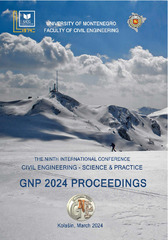Приказ основних података о документу
Structural fire resistance design of the football stadium roof steel structure
| dc.creator | Spremić, Milan | |
| dc.creator | Dobrić, Jelena | |
| dc.creator | Jakovljević, Isidora | |
| dc.creator | Dinčić, Nemanja | |
| dc.date.accessioned | 2024-03-11T10:34:38Z | |
| dc.date.available | 2024-03-11T10:34:38Z | |
| dc.date.issued | 2024 | |
| dc.identifier.isbn | 978-86-82707-36-3 | |
| dc.identifier.uri | https://grafar.grf.bg.ac.rs/handle/123456789/3468 | |
| dc.description.abstract | When analysing the fire resistance of the steel structure of the stadium roof in the event of a fire, the specific features of the stadium building must be taken into consideration. The stadium stands are open units of the building that are directly connected to the surrounding area. The clear height between the stadium roof and the stands is commonly large. However, the clear height between relatively small parts of the roof, directly above the top of the stands, could be smaller, potentially making this part of the roof the most vulnerable. On the stands of the stadium, it is prohibited to bring items that contain combustible material. In addition, the structure of the stadium, benches or chairs must be made of non-combustible material. Therefore, a fire that could compromise the steel structure of the stadium roof can only come from the stadium premises on the stands or under the stands. The fire scenarios on the stadium roof are not described in detail in the literature compared to indoor (covered) sports arenas. To assess the fire resistance of the roof structure, it is necessary to check all possible and potentially dangerous scenarios. The subject of the analysis presented in this paper is the roof steel structure of the stadium in Loznica, Serbia, which was built in the period 2021–2023. The study considers the following fire scenarios and their effects on the roof steel structure: (i) a local fire on the stands, and (ii) a fire in the stadium premises affecting the external members. The fire in stadium premises was analysed using the analytical expressions provided in Annex B of EN 1991-1-2 and EN 1993-1-2, as well as through CFD (Computational Fluid Dynamics) analysis of fire propagation. The calculation was performed for the domains of temperature, time and resistance, depending on the applied fire load analysis. Results showed that the steel structure of the stadium roof in Loznica meets the load-bearing codified criteria for the fire effects, with the exception of only one main roof truss. To address this issue, it was decided to install fire-resistant glass in the TV studio on the building's third floor to separate this area from the stands and prevent fire effects on the critical main roof truss. | sr |
| dc.language.iso | en | sr |
| dc.publisher | University of Montenegro Faculty of Civil Engineering | sr |
| dc.relation | info:eu-repo/grantAgreement/MESTD/inst-2020/200092/RS// | sr |
| dc.rights | openAccess | sr |
| dc.rights.uri | https://creativecommons.org/licenses/by-nc-nd/4.0/ | |
| dc.source | Proceedings of The 9th International Conference "Civil Engineering – Science and Practice", Kolašin, 5-9th March 2024 | sr |
| dc.subject | fire load | sr |
| dc.subject | fire resistance | sr |
| dc.subject | external fire | sr |
| dc.subject | steel roof structure | sr |
| dc.subject | CFD analysis | sr |
| dc.title | Structural fire resistance design of the football stadium roof steel structure | sr |
| dc.type | conferenceObject | sr |
| dc.rights.license | BY-NC-ND | sr |
| dc.citation.epage | 542 | |
| dc.citation.spage | 535 | |
| dc.identifier.fulltext | http://grafar.grf.bg.ac.rs/bitstream/id/12900/Full Paper.pdf | |
| dc.identifier.rcub | https://hdl.handle.net/21.15107/rcub_grafar_3468 | |
| dc.type.version | publishedVersion | sr |

